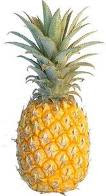 |
| Pineapple lands near Bathurst |
“Hopewell Bushmans River Harvey Egypt
 |
| Bertha Whittal |
Our next door neighbours were Captain and Mrs Suttie and their only son. Todd. A very short while after we had moved down there, Captain George Suttie passed away and was buried in Salem Bushmans River
 |
| Thelma Whittal |
On the farm were big fields of pineapples and it was the first time in my life that I was allowed to eat a whole pineapple by myself. The method was to break the top of the fruit off, cut the fruit in half, and then to eat it out with a spoon. This was so different to the withered pineapples that my mom used to buy at Christmas time to make a fruit salad which we called “angels food”. At first we used to eat a couple of pineapples each a day. It was fun! But we got used to it and after that we slowed down to a few slices a day.
The other crop planted on our farm was Chicory, a member of the sunflower family which produces a large tapered root which has been used for many years for its beneficial effect on the human digestive system. Chicory is also widely used in beverages as a blend with coffee and as an ingredient in pet food and breakfast cereals. It was first introduced into South Africa for commercial use in 1895 in the Alexandria
The third crop was mealies (maize), mostly grown for human consumption and poultry food. It was never grown in the same quantities as in the Free State as the Eastern Cape
 |
| The goats were always feeding in the lands |
The black staff all kept goats and it was a continual battle with them to keep their animals out of the crop fields. It was usually the duty of their young boys to herd the goats but they were most unreliable in performing their duties. They would rather be out hunting with their “Kaffir” dogs.
Killing hares, Bushbuck lambs and other small animals. There were also a lot of “Dassies”or Hyrax on the farm which they were encouraged to kill. These little animals also known as rock rabbits were very clever in hiding in their dens under huge boulders where the dogs could never get them, so they had to be stalked in the open and cut off from their dens by the dogs.
There could never be enough hours in a day for an eleven year old boy to do everything that he wanted to do. My mom would be upset with me when it came to mealtimes and I was missing again! I soon learnt to carry a sturdy stick wherever I went and this could be used for many purposes. I was also learning to speak IsiXhosa which was very important in communicating with the locals.
~~~~~~~~~~~
 |
| Africanis - the dog of Africa |
(The word “Kaffir” is not allowed to be used in South Africa South Africa Africa and with a proven lineage going back some 7000 years. They are the Africanis - the dog of Africa .” It is said that they are wonderful animals and very faithful to their masters.
The Zulus call their mongrel dog a “Mgodoyi” and they are also used for hunting and when a Zulu wanted to insult a man, he would call him a ”Mgodoyi”.
 |
| Dassie. |
* * * * * *

The "Kaffir" dogs do look very loyal, I have seen them walking after their owners next to a very busy road with trucks, cars and taxies going past in Zululand. No leash attached to the dogs, on the odd occasion would I see one on a lead.
ReplyDelete